#CampingEssentials
Explore tagged Tumblr posts
Text
🔥 JB Lighters – Where Power Meets Precision 🔥
Tired of weak flames and unreliable lighters? Step up your flame game with the JB Tri-Flame Lighter — a sleek, rechargeable, and ultra-powerful butane lighter built for performance.

✨ What Makes It Ultimate? ✔ 3 powerful jet flames for a clean, even burn ✔ Blue flame = hotter and more efficient ✔ Battery-powered ignition – USB cable included ✔ Refillable & built to last ✔ Elegant, modern, compact design
Whether you're lighting up a cigar, firing up the grill, or just prepping for the outdoors – JB Lighters deliver intense flame in seconds with one press.
🎁 A must-have for BBQ fans, travelers, cigar lovers, and anyone who appreciates quality gear.
👉 Get yours now at jb-lighters.com No flick. Just fire. 🔥
#JBLighters#TriFlameLighter#JetLighter#CampingEssentials#GadgetGoals#BBQReady#RechargeableLighter#EverydayCarry#MensGear#FireWithStyle
2 notes
·
View notes
Text

Nov 21, 2024 - Amazon.com : Inflame Fire Starters 70 pcs Fire Starters for Campfires, Grill, BBQ, Fireplace, Woodstove -...
5 notes
·
View notes
Text
Best Outdoor Equipment by Himmaleh
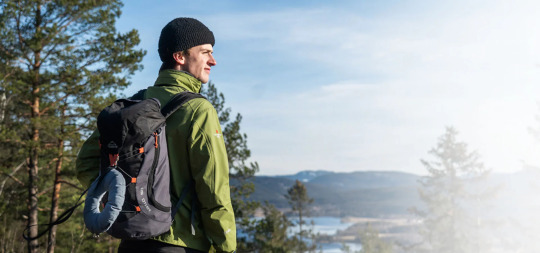
When it comes to outdoor adventures, having the right gear makes all the difference. Whether you're a passionate trekker, a camping enthusiast, or just someone who enjoys nature, Best Outdoor Equipment by Himmaleh ensures that you have top-quality products that can withstand the elements. From trekking shoes to camping tents, Himmaleh provides durable, comfortable, and reliable outdoor equipment.
Why Choose Himmaleh for Your Outdoor Gear?
Himmaleh is known for producing high-quality outdoor equipment designed to endure the toughest environments. Whether you are braving the cold, hiking through rugged terrain, or setting up camp in unpredictable weather, Himmaleh's gear provides maximum support and protection. Here’s what sets Best Outdoor Equipment by Himmaleh apart:
Durability: Built to last with high-end materials.
Comfort: Ergonomic designs that reduce strain and fatigue.
Weather Resistance: Waterproof and windproof features ensure all-weather usability.
Affordability: Competitive pricing without compromising quality.
Trekking Shoes for Ultimate Comfort
When planning a trek, your shoes are the most critical piece of equipment. Himmaleh’s trekking shoes offer excellent grip, ankle support, and waterproof protection, making them perfect for uneven trails and wet conditions.
Features of Himmaleh Trekking Shoes:
Waterproof Material: Keeps feet dry even in wet conditions.
High-Quality Sole: Provides superior traction to prevent slipping.
Breathable Fabric: Reduces sweating and discomfort during long hikes.
A good pair of trekking shoes can make or break your adventure. With Best Outdoor Equipment by Himmaleh, you get the best in comfort and durability.
Waterproof Shoes for All-Weather Adventures
For those who love hiking in wet conditions, waterproof shoes are a must-have. Himmaleh’s waterproof footwear ensures your feet remain dry, comfortable, and well-protected, no matter how muddy or wet the terrain gets.
Benefits of Waterproof Shoes from Himmaleh:
Advanced Waterproof Technology: Keeps moisture out.
Durable Construction: Built for rough and challenging terrains.
Lightweight Design: Ensures ease of movement without fatigue.
With Himmaleh’s waterproof shoes, you can confidently trek through streams, puddles, and rain without any discomfort.
Camping Tents: Your Shelter in the Wild
A reliable camping tent is essential for any outdoor trip. Whether you're camping in the mountains, forests, or near a lake, Himmaleh's camping tents provide a secure and comfortable shelter.
Key Features of Himmaleh Camping Tents:
Weather-Resistant Fabric: Protects against wind, rain, and extreme temperatures.
Easy Setup: Quick assembly so you can spend more time enjoying nature.
Spacious Interiors: Enough room for comfortable sleeping and storage.
Choosing the right camping tent ensures a good night’s sleep and protection from the elements, making your adventure more enjoyable.
Waterproof Tents: Stay Dry, No Matter the Weather
For unpredictable weather conditions, waterproof tents are a must-have. Himmaleh offers high-quality waterproof tents that keep you safe from rain and moisture, ensuring a comfortable camping experience.
Why Choose Himmaleh’s Waterproof Tents?
Superior Waterproof Coating: Keeps water out even in heavy rain.
Sturdy Frame: Withstands strong winds and harsh weather.
Ventilation Features: Prevents condensation buildup inside the tent.
A waterproof tent from Himmaleh guarantees a dry and cozy retreat after a long day of adventure.
Why Himmaleh is the Best Choice for Outdoor Equipment
Himmaleh is trusted by outdoor enthusiasts for its top-tier products. Here’s why Best Outdoor Equipment by Himmaleh stands out:
Innovative Designs: Ergonomically crafted gear for enhanced performance.
Premium Materials: Ensuring long-lasting durability.
Affordability: Competitive pricing for premium products.
Customer Satisfaction: Trusted by adventurers worldwide.
Conclusion
Whether you need trekking shoes, waterproof shoes, camping tents, or waterproof tents, Best Outdoor Equipment by Himmaleh has got you covered. With superior quality, comfort, and durability, Himmaleh ensures that your outdoor adventures are safe and enjoyable.
2 notes
·
View notes
Text
Crafting the Perfect Sheath for RUSSEL Green River Knife, it's getting b...
Still learning this whole leathering stuff. Feel like I am improving but still alot to learn However I persist….. Just saying…. Knowledge is a survival skill The Novice Survivalist

View On WordPress
#novicesurvivalist#10 C&039;s#10 C&039;s of survival#Basic survival#best knife. fixed blade knife#Bush craft knife#camp knives#Camping tips#campingessentials#DIY camping hacks#DIY KNIFE MODS#diyleatherprojects#diyprojects#EDC#Nature#outdoors
2 notes
·
View notes
Text
Can Your Tent Handle a Monsoon? Features to Look For
When you think about a trekking tent, the first things that come to mind are protection, peace, and portability. But how do you know your trekking tent will truly stand up to the challenges of nature? Whether you’re heading into high-altitude winds, thick forest trails, or wildlife zones, testing your trekking tent for real-life survival is essential. A tent that looks great in your backyard may not hold up during a thunderstorm in the mountains.
In this blog, let’s talk about how your trekking tent reacts to real outdoor conditions—from windstorms to curious animals—and why proper testing can make or break your entire trekking experience.
1. Why Field Testing a Trekking Tent Matters
Your trekking tent is more than just a travel accessory. It’s your shelter in the wild, your safe zone after a long day on foot. No matter how lightweight or compact it is, if it fails in a storm or collapses during the night, it can ruin your trip—or worse, become dangerous.
Field testing ensures your trekking tent can handle unexpected situations. Testing it in different environments helps you understand its strengths and limits before your real trek begins.
2. Windstorm Resistance: The Real Test of Strength
High-speed winds can be a trekking tent’s worst enemy. A strong gust can bend poles, snap clips, or even rip fabric apart. Before your trek, take your trekking tent to an open area and test it in strong wind. Anchor it with proper stakes, and check how tightly the fabric holds up.
Even if the tent says it’s “windproof,” nothing beats real-time testing. Practice pitching it in rough conditions—your life may depend on how fast you can secure it.
Quick Tip: Pitch your trekking tent with the narrow side facing the wind. This reduces wind drag and increases stability.
3. Rain, Moisture & Mud: Will Your Trekking Tent Stay Dry?
Even a light drizzle can feel like a flood if your trekking tent isn’t well sealed. Test it during rainy weather or simulate rain with a water hose. Focus on the seams, zippers, and floor. If water leaks through, seal those areas with waterproof tape or spray before your actual trek.
Also, check how fast the trekking tent dries after rain. A tent that stays wet for too long becomes heavy and smells bad.
4. Wildlife Encounters: The Forgotten Test
Many people forget to test how their trekking tent handles curious animals. While no tent is 100% animal-proof, some offer better protection than others. In forested regions, small animals like raccoons or monkeys can tear into a tent for food.
Test your trekking tent by placing food inside (temporarily) and seeing how animals react. It gives you an idea of how strong the zippers and fabric are. On the trail, always keep food outside the tent to avoid attracting wildlife.
5. Ventilation and Breathability in the Wild
One underrated aspect of a good trekking tent is airflow. A poorly ventilated tent traps condensation, making your sleeping bag and gear damp by morning. Set up your trekking tent in warm and cold conditions to see how well it breathes.
Look for mesh panels, dual-layer doors, and adjustable vents. Test how comfortable it feels when closed completely and when partially open.
6. Floor Durability Test: Rocks, Roots, and Rough Ground
The tent floor is constantly in contact with rough surfaces. Lay your trekking tent on different types of terrain—rocky, muddy, grassy—and check for wear and tear. You can also place some weighted gear inside to test if the floor material tears or stretches.
Use a groundsheet underneath to extend the life of your trekking tent. It also prevents water from seeping in during rain.
7. Cold-Weather Compatibility
In colder regions, your trekking tent must trap warmth without suffocating you. Test it overnight in cool temperatures. See how well it insulates heat and whether you wake up dry or damp. Even if you don’t plan on trekking in snow, night-time temperatures in the mountains drop fast.
8. Packing and Setup in the Dark
One of the most important real-life tests of a trekking tent is how easily you can pack or pitch it in low light. You may arrive at a campsite after dark or need to move early in the morning. Practice setting up and packing your trekking tent with a headlamp or no light at all.
If it's confusing or time-consuming, it may not be ideal for serious treks.
9. Weight and Carry Test
How your trekking tent feels on your back matters. Pack it with the rest of your gear and go on a practice trek. Check if the weight feels balanced. A tent that looks light on paper may feel heavy when combined with your stove, clothes, and sleeping bag.
Testing weight and comfort while walking will help you decide if the trekking tent suits your trek’s difficulty level.
10. Real Trek, Real Conditions: Final Field Run
Before heading for your main trek, take your trekking tent on a weekend trail or a short mountain trip. Face the elements, sleep in it, pack and unpack it, and adjust. This is the most realistic test of all.
A trekking tent that performs well in these conditions is more likely to succeed on longer, harder trails.
Final Thoughts
Choosing the right trekking tent isn’t just about specs—it’s about experience. Real-world testing helps you trust your gear, sleep better, and stay safer. Whether you’re camping under the stars or in a windy alpine meadow, your trekking tent
is your home. Test it well before you trust it completely.
0 notes
Text
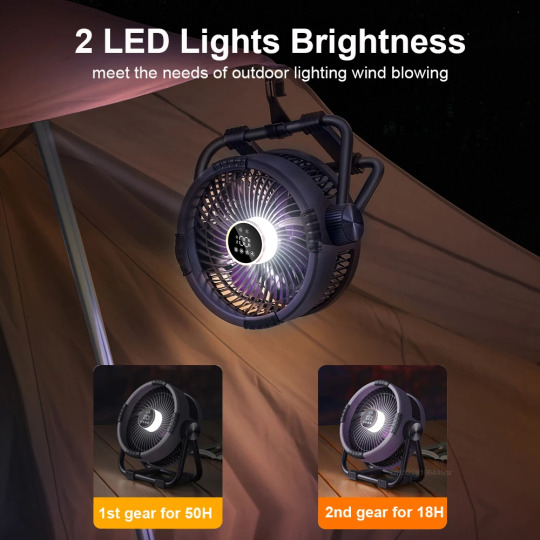
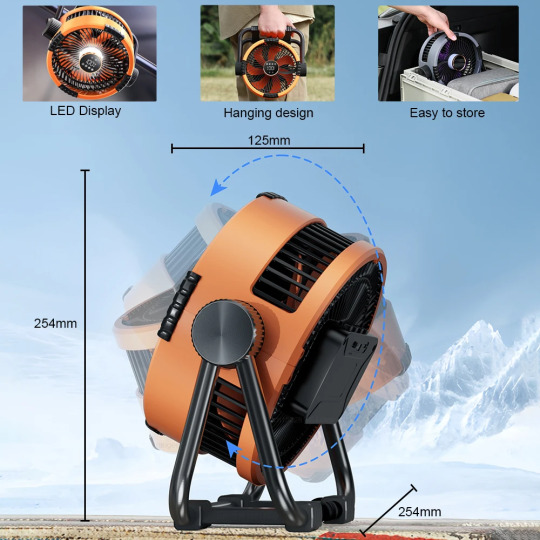
#onechoiceshop#usa#fashion#aliexpressfinds#Death Valley#Phoenix#Las Vegas#stylish#giftideas#Houston#texas#texas chainsaw massacre#louisiana#california#new orleans#virginia#alabama#kentucky#camping#portablefan#outdoorgear#campingessentials#rechargeablefan#tentfan#campinglife#travelgadgets#summerfun#adventure#camping fan#portable fan
1 note
·
View note
Text
Durable Camping Equipment – 4wd lights and camping
Need reliable camping equipment for your next outdoor trip? 4wd lights and camping offers a full range of quality gear designed to handle the Australian outdoors. Whether you're camping by the coast or heading deep into the bush, we have the tools and supplies to make your trip comfortable and stress-free.
Top-Quality Gear for Every Camper
We provide outdoor enthusiasts with tough and functional gear, including:
✅ Tents, swags, and rooftop sleeping solutions ✅ Camp stoves, cookware, and fridges ✅ LED lights, torches, and solar kits ✅ Camp chairs, tables, and awnings ✅ Recovery kits and 4WD accessories
Every product is chosen to deliver value, convenience, and performance in demanding conditions.
Why Choose Us for Camping Equipment?
At 4wd lights and camping, you’ll get:
🛠️ Rugged, weather-tested gear 📦 Fast shipping and reliable service 💬 Expert advice from real outdoor users 🎯 Great prices on leading brands 🧭 Equipment suited for Aussie terrain and conditions
We’re passionate about the outdoors and only sell gear we personally stand behind.
Get Your Camping Equipment Today
Ready to upgrade your camping equipment? Shop now at 4wd lights and camping for tough gear at great prices.
Website 🌐 Visit: https://4wdlightsandcamping.com.au/
0 notes
Text
Cooler Shock Reusable Ice Packs
This article contains affiliate links which I may receive compensation for
These high-performance reusable freezer packs are designed to outperform regular ice—perfect for coolers, lunch boxes, camping trips, beach days, road trips, and more.
Long-lasting cold keeps food and drinks chilled for hours
Reusable & leak-proof design
Ideal for fishing, camping, tailgating, and everyday use
Saves space and eliminates messy melted ice
Just freeze, pack, and go
Whether you're heading outdoors or packing lunch, these are a must-have for keeping it cool.
Shop here

#CoolerGear#CampingEssentials#IcePacks#BeachMustHaves#ReusableIcePack#RoadTripGear#FishingGear#OutdoorCooler#TumblrOutdoors#TravelEssentials
0 notes
Text
Inside the Life of a Trekking Tent on a 10-Day Hike
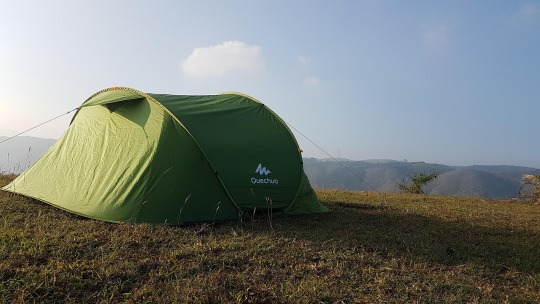
A 10-day hike is not just a journey through mountains, forests, and rivers—it’s also a test of everything you carry, especially your trekking tent. While boots hit the trail and backpacks get heavier, one silent companion does its job day and night without complaint: the trekking tent.
Let’s take a closer look at what really happens inside the life of a trekking tent during a 10-day adventure in the wild.
Day 1: The First Pitch
It’s the first night. The sun begins to set as the hikers reach a forest clearing. This is when the trekking tent gets its first taste of action. Out of the bag it comes, compact and neatly folded. The ground is checked, cleared of sharp stones and twigs. Pegs are hammered in, poles are locked, and in minutes, the trekking tent stands tall—ready to provide shelter.
It faces its first task: night dew. As temperatures drop, the walls get cold and moist. But the tent does what it’s designed to do—keep the hiker dry and warm.
Day 2-3: Settling into Routine
With every setup and takedown, the trekking tent begins to show signs of use. The corners gather dust. The zippers are opened and closed a hundred times a day. A slight snag is noticed—nothing serious, but it’s there.
By now, the tent has been placed on both soft grass and hard soil. It’s already learned to handle uneven ground. Wind tries to rattle it at night, but its frame holds strong.
Day 4: Rain Test
Rain comes without warning. What was once a sunny trail becomes a wet, muddy campsite. This is where the quality of the trekking tent truly matters. The rainfly is pulled tight. The seams are checked. Water hits hard, but nothing gets inside.
Inside, the tent feels like a safe bubble. Dry clothes are kept away from the edges. The hiker sleeps peacefully while raindrops dance above. The trekking tent proves it's not just a shelter—it’s a dependable friend.
Day 5-6: Midway Challenges
Midway through the hike, everything begins to show fatigue—the hiker, the gear, and yes, the trekking tent. Dust clings to the fabric. The zippers start to grind. The poles feel slightly bent. But the tent keeps going.
On a cold night, the hiker cooks just outside the tent. Steam, heat, and food smells linger. The trekking tent holds in warmth while letting out enough air through its vents to avoid condensation.
Each day ends with a new pitch, and the tent performs without fail.
Day 7: A Rough Night
A storm hits during the night. High winds, heavy rain, and sudden cold. The hiker anchors the trekking tent with extra rocks. Guy lines are stretched to the limit. Flaps are tightened.
It’s a long night. The tent bends but doesn’t break. The wind howls, but inside, it’s still. The trekking tent proves once again that reliability comes from design, experience, and trust.
Day 8: The Morning After
The storm leaves behind dampness, broken twigs, and scattered gear. But the trekking tent is still standing. A few drops found their way through the zipper flap, but nothing major. A quick wipe, some airing out in the morning sun, and the tent is good to go again.
The hiker checks every corner, repacks it carefully, and carries it with care. The bond is stronger now. The trekking tent is no longer just a tool—it’s part of the journey.
Day 9: Closer to the End
The trek is nearing its end. The tent has been pitched nine times already. It’s been through heat, rain, wind, and cold. It has seen valleys, forests, and mountain ridges. The fabric is now weathered, but proud.
Tonight’s setup is slower. The hiker is tired, but the routine is automatic. The trekking tent is placed on level ground, flaps open toward the breeze, and the gear is arranged just right inside. It feels like home now.
Day 10: The Final Morning
The last sunrise of the hike. The hiker unzips the trekking tent one final time. Morning light spills in. Birds are calling. The tent is damp with dew again, just like Day 1.
Taking it down this time feels different. Every fold is a memory. Every smudge tells a story. The hiker packs it up, straps it to the bag, and silently thanks it—for ten nights of safety, sleep, and shelter.
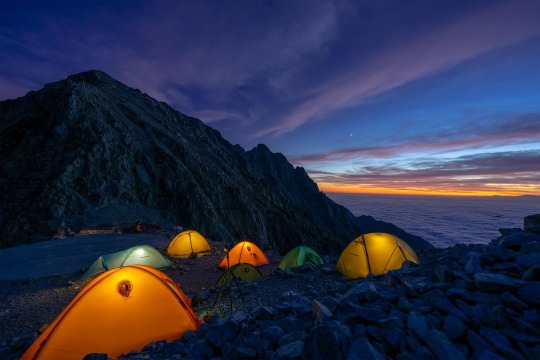
Final Thoughts
A trekking tent is more than just fabric and poles. On a 10-day hike, it becomes part of the adventure. It absorbs the spirit of the trail, the moods of the weather, and the energy of the trekker.
It endures. It protects. It listens quietly while you sleep. And when you return home, it carries the scent of pine, the dust of the trail, and the memories of every night under the stars.
So next time you pitch your trekking tent, know that it’s not just setting up a shelter. You’re inviting a companion into your journey—one that will be with you through every step, every storm, and every sunrise.
#TrekkingTent#CampingEssentials#OutdoorGear#HikingLife#TentCamping#BackpackingAdventure#WildernessCamp#himmaleh
0 notes
Text


Power Your Adventures with Portable Energy!
Whether you're camping under the stars, hiking remote trails, or enjoying a weekend getaway, a portable power station keeps your essential devices charged and ready. No more worrying about dead phones, dim lanterns, or cold food—just reliable, off-grid power wherever you go!
🔋 Why Take Portable Power Outdoors? ✔ Stay Connected – Keep phones, GPS, and cameras powered for safety and memories. ✔ Light Up the Night – Run LED lights, fans, or small appliances at your campsite. ✔ Emergency Ready – A must-have for unexpected power outages or remote trips. ✔ Eco-Friendly Energy – Solar-compatible options let you harness the sun’s power sustainably.
⚡ Adventure Without Limits! Compact, lightweight, and built for the wild, portable power stations are the ultimate companion for campers, RV travelers, and outdoor enthusiasts.
Explore farther. Stay powered. Never stop adventuring!
0 notes
Text
youtube
The Inflatable Lounge Chair You Didn't Know You Needed!
#youtube#shorts#InflatableChair#LoungeChair#ComfyVibes#OutdoorLiving#BeachGear#CampingEssentials#RelaxAnywhere#PortableComfort#ChillZone#AirChair#TravelHacks#MustHave#TrendingNow#ViralProduct#FurnitureGoals#TumblrFinds#InflatableFurniture#BackyardVibes#PoolsideStyle#WeekendMood
0 notes
Text
Ice Boxes Market Growth Driven by Rising Outdoor Recreational and Camping Activities Globally
The Ice Boxes Market is witnessing unprecedented growth, fueled by a global surge in outdoor recreational pursuits such as camping, hiking, fishing, and nature excursions. As more consumers seek to disconnect from modern urban life and embrace experiences in nature, the demand for efficient, portable cooling solutions like ice boxes has skyrocketed. These rugged containers, designed to keep food and beverages cold without electricity, are increasingly becoming essential for adventurers and casual campers alike.
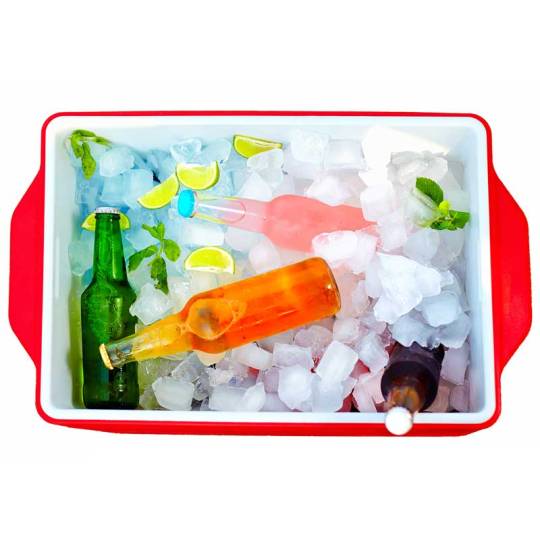
Rising Interest in Outdoor Lifestyles
A growing number of people around the world are embracing outdoor lifestyles. The COVID-19 pandemic acted as a catalyst for this movement, encouraging individuals and families to pursue socially distanced activities like hiking, overlanding, and tent camping. Even post-pandemic, this preference for spending time outdoors continues to grow, backed by the rise of digital nomadism and wellness travel trends.
Camping gear sales, especially for coolers and insulated boxes, have soared. Ice boxes, being non-electric and environmentally friendly, fit perfectly into this lifestyle, offering convenience, durability, and the ability to store perishables during extended trips.
Portable Cooling for All Terrains
The appeal of ice boxes lies in their portability and adaptability. Whether in rugged mountain ranges, sandy deserts, dense forests, or sunny beaches, ice boxes deliver dependable performance. Unlike powered refrigerators or plug-in coolers, they don’t rely on access to electricity, making them ideal for remote and off-grid locations.
Modern ice boxes are designed to offer long ice retention, some exceeding 5–7 days, and feature rotomolded construction, reinforced latches, and rubber gaskets to maintain internal temperature. These features make them indispensable for multi-day camping or long road trips.
Eco-Friendly and Energy-Free Cooling
Environmental awareness is another factor pushing the demand for ice boxes. Many consumers now prefer non-electric solutions to reduce their carbon footprint. Ice boxes provide a reusable and energy-free method of cooling, aligning with eco-tourism trends.
Additionally, manufacturers are focusing on recyclable materials, BPA-free interiors, and improved insulation technology using non-toxic polyurethane foam or aerogel, positioning these products as environmentally responsible options in a world increasingly seeking sustainable alternatives.
Expanding Demographic and Geographic Demand
While North America and Europe have traditionally led the outdoor gear market, the Ice Boxes Market is seeing rising demand in Asia-Pacific, South America, and Africa. Urban populations in developing economies are showing greater interest in weekend camping, outdoor festivals, and national park tourism. This is creating a ripple effect on outdoor equipment purchases.
In India, for example, the proliferation of hill station tourism and spiritual retreats in remote locations has led to a jump in portable cooler usage. Similarly, Southeast Asia’s emerging glamping scene has driven purchases among hospitality operators and travel enthusiasts.
Technological Advancements in Ice Box Design
Today’s consumers demand more than just basic cooling—they want ergonomics, smart features, and durability. This has led to innovations such as:
Wheeled ice boxes for easier transport
Dual-compartment designs to separate food and drinks
Integrated cup holders, cutting boards, and bottle openers
UV-resistant outer shells for long-term use under sunlight
Smart cooling monitors that indicate internal temperature
These enhancements not only improve user experience but also increase product value, leading to higher margins for manufacturers and broader appeal across customer segments.
Role of Social Media and Brand Influencers
Another factor accelerating growth is the influence of social media. Outdoor lifestyle influencers, travel bloggers, and YouTube content creators regularly feature camping gear reviews and travel vlogs, showcasing the utility of ice boxes in real-world settings. This content is inspiring broader consumer adoption, especially among millennials and Gen Z who value real-life demonstrations over traditional advertising.
Additionally, influencer marketing has allowed niche and premium brands to establish themselves in a competitive market through direct-to-consumer models.
Retail Expansion and Online Availability
Distribution channels have also evolved to support market expansion. In addition to outdoor retailers and hardware stores, e-commerce platforms now offer a wide range of ice boxes catering to all price segments. Brands like YETI, Coleman, Igloo, and domestic players have leveraged online platforms for wider reach, bolstered by customer reviews, video content, and bundling deals with other camping gear.
Moreover, the availability of “Buy Now, Pay Later” options has further made premium ice boxes accessible to broader audiences.
Conclusion: What’s Next for the Ice Boxes Market?
The Ice Boxes Market is set to maintain its upward momentum as outdoor recreation becomes a permanent fixture of modern lifestyles.
#IceBoxesMarket#OutdoorGear#CampingEssentials#PortableCooling#RecreationalTrends#EcoFriendlySolutions#InsulatedContainers#AdventureTravel#OffGridLiving#SustainableTravel
0 notes
Text
Crafting the Perfect Sheath for RUSSEL Green River Knife, it's getting b...
Still learning this whole leathering stuff. Feel like I am improving but still alot to learn However I persist….. Just saying…. Knowledge is a survival skill The Novice Survivalist

View On WordPress
#novicesurvivalist#10 C&039;s#10 C&039;s of survival#Basic survival#best knife. fixed blade knife#Bush craft knife#camp knives#Camping tips#campingessentials#DIY camping hacks#DIY KNIFE MODS#diyleatherprojects#diyprojects#EDC#Nature#outdoors
2 notes
·
View notes
Text
Modified OPINEL No 9, The TADPOLE, Wharncliffe Whittler , It's a little masterpiece
I love the Opinel out knife. They are really well made. Almost perfect. The best thing is that they can be modified in so many ways. Here’s one way I changed a #9. Remember knowledge is a survival skill The Novice Survivalist

View On WordPress
#10 C&039;s#Basic survival#Bear butt Tarps#budget knives#Bush craft knife#BushCraft#camp knives#camping#camping planning#Camping tips#camping tips hiking#campingessentials#DIY KNIFE MODS#DIY wooden walking stick#diyprojects#EDC Pocket knife#OPINEL KNIVES
3 notes
·
View notes
Text
Hike, Sleep, Repeat: Trekking Tents That Keep the Rhythm Going
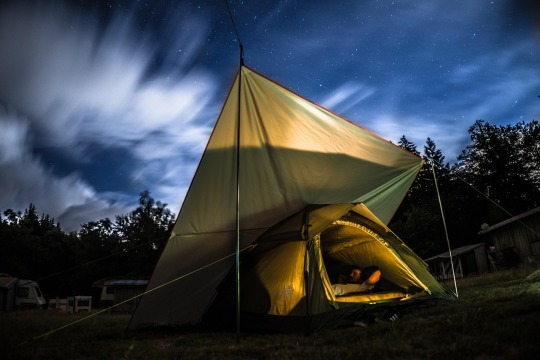
When you're out in the wild, your tent isn’t just a shelter—it’s your home. Whether you're trekking through forests, hiking steep mountain trails, or camping beside a lake, having the right trekking tent can make a huge difference. A trekking tent is more than just fabric and poles; it’s your safety net against rain, wind, insects, and cold. But how do you know if your trekking tent is truly high quality?
In this blog, we break down the top features that define a great trekking tent—so you’re never left guessing or soaked in the rain.
1. Lightweight Without Compromising Strength
One of the most important things to consider in a trekking tent is its weight. When you’re carrying your gear on your back for hours, every gram counts. A high-quality trekking tent is designed to be lightweight yet strong enough to handle the rigors of nature.
Look for materials that offer a good balance—light enough to carry, but sturdy enough to protect you from harsh weather. Feather-light tents that can’t stand up to wind or rain aren’t worth it.
2. Waterproof Fabric & Sealed Seams
Weather can be unpredictable. One minute it’s sunny, the next it's pouring. A premium trekking tent should come with waterproof fabric and properly sealed seams. The rainfly should extend well over the body of the tent and ideally reach the ground. Seams should be double-stitched and taped to prevent water from seeping in.
Nothing ruins a night faster than a leaky tent. Staying dry isn’t a luxury—it’s a necessity when you're out on the trail.
3. Good Ventilation & Breathability
Ever woken up to find your sleeping bag wet from condensation? Poor ventilation is usually the culprit. A high-quality trekking tent allows fresh air to circulate without letting rain or bugs inside.
Mesh panels, adjustable vents, and dual-layer doors can significantly improve airflow. This helps keep the inside of your trekking tent fresh, dry, and comfortable—even in humid or chilly conditions.
4. Strong Poles & Durable Zippers
A trekking tent is only as strong as its structure. The tent poles should be both light and durable—aluminum poles are usually a good bet. Fiberglass poles might be cheaper, but they’re often prone to breaking under pressure.
Zippers, often overlooked, are another key detail. A stuck or broken zipper can leave you exposed to the elements. Quality zippers should glide smoothly and resist snagging, even when the fabric is taut.
5. Quick & Easy Setup
After a long day of trekking, the last thing you want is a complicated setup. A good trekking tent should be easy to pitch, ideally even in the dark or when it's raining. Color-coded poles, intuitive clips, and minimal steps make all the difference.
Practice setting up your trekking tent at home before you head out—trust us, it saves a lot of frustration on the trail.
6. Spacious Interior Without Extra Bulk
You want enough room to sit up, change clothes, and keep your gear inside, but you don’t want to carry a bulky tent. The best trekking tents make smart use of space. Look for tents with vertical walls, a decent peak height, and vestibules for gear storage.
Even solo tents should give you enough room to stretch your legs and feel comfortable. Feeling cramped can ruin your experience, especially on longer treks.
7. Wind Resistance & Stability
A good trekking tent should hold its ground—literally. High winds, rocky surfaces, and uneven ground are part of the trekking experience. Quality tents are designed with stability in mind. Low-profile shapes, solid stakes, tension cords, and aerodynamic designs all help your tent stay put.
Flimsy tents won’t just collapse—they can fly away or tear apart. Choose a tent built to withstand nature’s mood swings.
8. Compact Packed Size
Space in your backpack is precious. A top-tier trekking tent packs down small so it doesn’t take over your entire bag. Some even come with compression straps or sacks to make packing easier.
Before buying, check the packed dimensions and make sure it fits well in or on your backpack.
9. Bug Protection
Whether you're in a dense forest or by a still lake, insects can be a real nuisance. A reliable trekking tent will include fine mesh panels that keep bugs out while letting air in.
You don’t want to be slapping mosquitoes all night or waking up with bites. Bug protection is a small feature that makes a huge difference.
10. Long-Term Durability
Lastly, a high-quality trekking tent lasts for years, not just a season. Check reviews, inspect stitching, and look for reinforced stress points. The more you use it, the more value you get. A durable tent becomes a trusted companion on all your adventures.
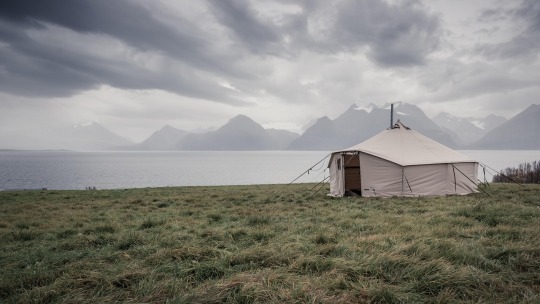
Final Thoughts
Choosing the right trekking tent isn’t just about ticking boxes—it’s about knowing what keeps you safe, dry, and comfortable when you’re miles away from civilization. Whether you're trekking solo or with a group, your tent should feel like a small, secure world of its own.
A high-quality trekking tent becomes more than just part of your gear—it becomes part of your journey.
0 notes
Text
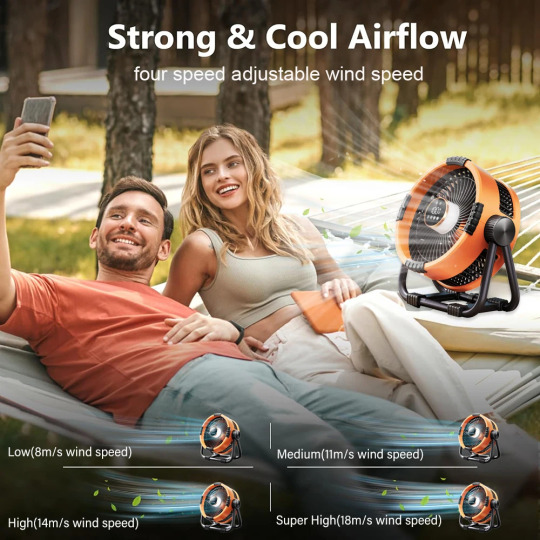
#onechoiceshop#usa#fashion#aliexpressfinds#Death Valley#Phoenix#Las Vegas#stylish#giftideas#Houston#texas#texas chainsaw massacre#louisiana#california#new orleans#virginia#alabama#kentucky#camping#portablefan#outdoorgear#campingessentials#rechargeablefan#tentfan#campinglife#travelgadgets#summerfun#adventure#camping fan#portable fan
1 note
·
View note